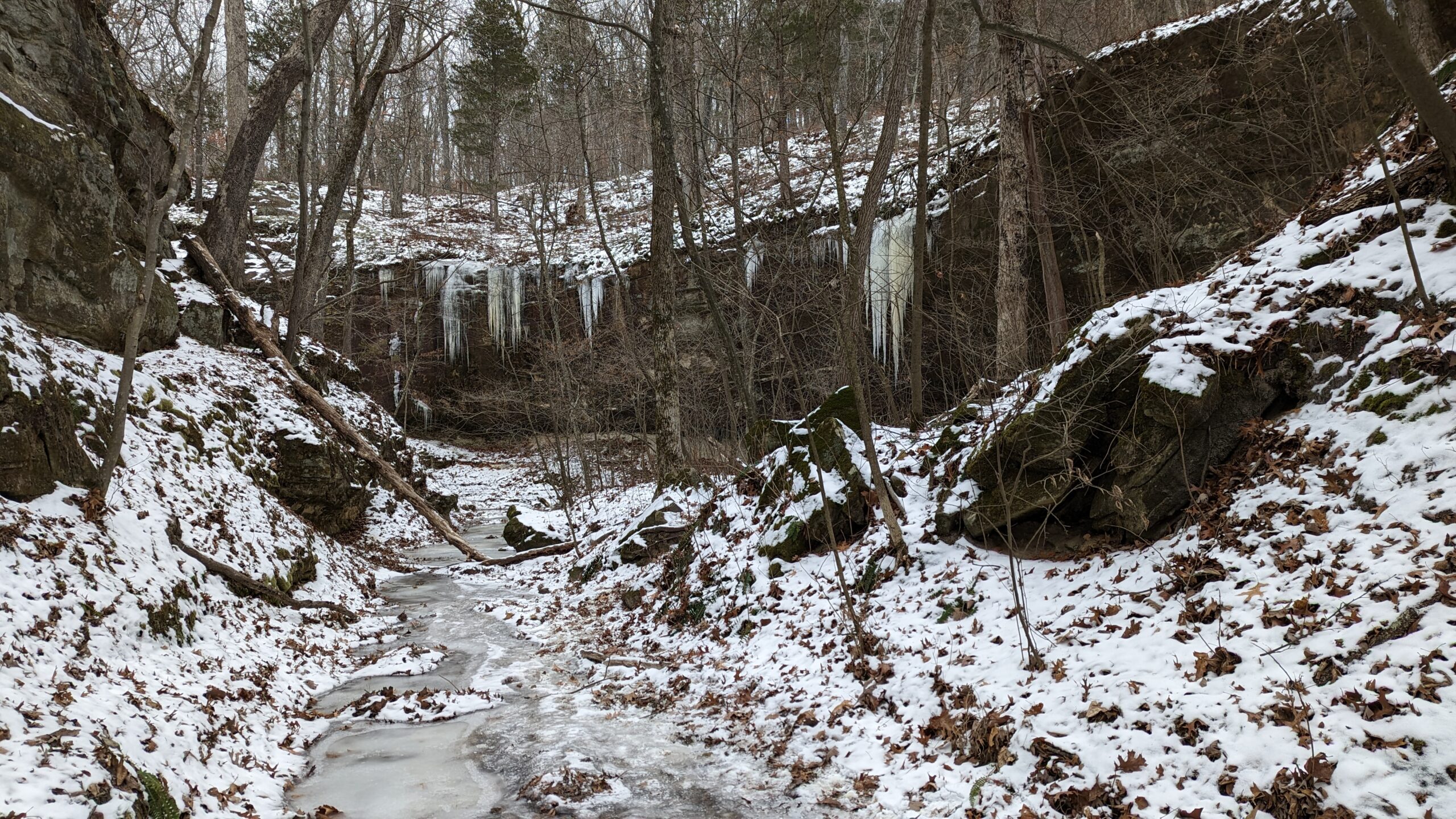Many people may not think of the winter months as a great time to hike. However, I love hiking in the winter, especially when there is snow on the ground! I enjoy hiking through the woods in the snow, seeing ice formations hanging from rocks, and seeing frozen waterfalls and creeks. It gives you a unique perspective on trails you may have seen dozens of times before. Winter hiking also gives you the opportunity to get out and explore with fewer crowds and no bugs!
In this post, I use affiliate links to recommend various products that have helped make our travel/camping experiences even better. If you click and purchase, I may receive a small commission on purchases at no extra cost to you.
As an Amazon Associate I earn from qualifying purchases.

Here are 5 tips for winter hiking that I consider as I prepare to hike in the cooler months. Hopefully, they will help you get out and enjoy the outdoors during a cooler time of the year. If you’re interested in learning more about some of our favorite hiking gear, check out this post: Hiking and Trail Running Gear and Accessories – Miles of Yellow Lines.
1. Dress in Layers
You’ve probably heard this one before, but it’s true! Layers are ideal for winter hikes. Very rarely would I wear my big, bulky winter coat on a hike. I count on getting warmer as I trudge up and down hills, so I dress a little lighter than I would if I would be standing stationary outside. Often, I wear a thin long-sleeve base layer under a medium/heavy layer and then top it off with a vest. I also make sure to stay away from cotton material, especially for my base layer, as cotton holds moisture. I always hike with a backpack, where I can store additional layers, if needed.

Vests are my go-to for winter hiking. They provide warmth to the core while allowing your arms to breathe as you work up heat on the hike. I also have some great fleece-lined hiking pants for cooler weather and wool socks for my feet.
2. Waterproof Shoes/Boots
I have a great pair of waterproof hiking boots that I wear in all seasons. I pair these boots with my wool socks, and I’m all set for a winter hike. In fact, I actually wear these socks around all the time during the winter! Even if there is snow on the trail, these boots keep my feet warm and dry. Snow boots could also be a good option to keep your feet warm and dry. My snow boots are similar to my hiking boots but have more insulation and are taller to protect from larger amounts of snow.
Omni-Wool Hiking Socks (Amazon link)

These are my current hiking boots. I wear them year-round. I really appreciate that they’re waterproof, which is great for creek crossings or walking on a snowy trail. They are zero-drop style shoes, and they do run a bit small, so consider ordering a size up.
Xero Xcursion Fusion Hiking Boot – Women’s (Amazon link)
Xero Xcursion Fusion Hiking Boot – Men‘s (Amazon link)
3. Hat/Earband and Gloves
This is a big one. I would never leave on a winter hike without some type of ear covering and gloves. Specifically, I like to hike with my convertible running gloves. These gloves have five covered fingers with an additional flap to pull over that turns them into mittens. The mitten flap adds an extra layer on top of the gloves. It’s like having a windbreaker for your fingers.
Convertible Gloves (Amazon link)
Columbia Ear Band (Amazon link)

4. Drinks/Snacks
Many people don’t think about getting dehydrated in cooler weather, but it is still a possibility. I usually bring a water bottle and maybe a couple of granola bars depending on the length of the hike. If I expect to be out for more than 3 hours, I’ll pack heartier snacks and maybe even a light meal to eat on the hike.
5. Traction Devices/Trekking Poles
These items depend on the hike. We hiked into the Grand Canyon on the Bright Angel Trail in February and I was happy to have both traction devices for my shoes and trekking poles because portions of the trail were fairly icy. For traction devices, we have Yaktrax that we can put over our hiking boots. For more mellow winter hikes, I will often not worry about either traction devices or trekking poles.


Yaktrax (Amazon link)
These are the winter hiking tips and tricks we’ve picked up over the years. This is not a comprehensive checklist for winter adventures. We do most of our winter hikes in the Midwest. Depending on location and terrain, you may need to adjust for your specific situation.

